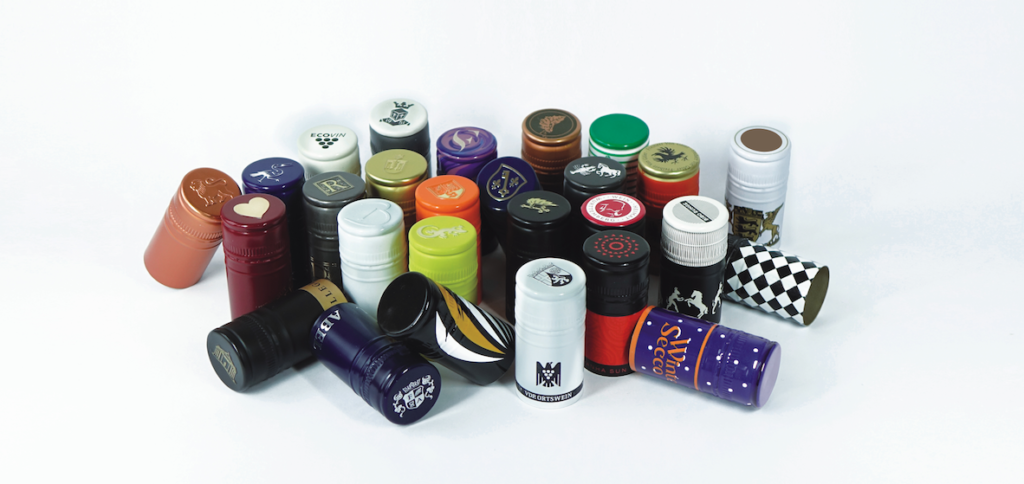Put a cork in it

Merely keeping bottles sealed? That was yesterday! Now closures for wine bottles have to meet more stringent requirements. Are we on the road to “smart” closures?
Natural corks, agglomerated cork stoppers, screw caps, plastic plugs or glass stoppers—to say nothing of crown corks: Winemakers have plenty of alternatives. But which closure is the best? It is difficult to say! Generally speaking there is a duel between natural cork and the aluminum screw cap, although there are plenty of good arguments for plastic closures such as those from leading manufacturer Nomacorc or the aesthetically pleasing glass stopper, an all-purpose bottle closure that can be reused. Newer, more elaborate developments combine the advantages of different types of closures—such as gluing disks of natural cork onto agglomerated stoppers, for example. The result is the technical or 1+1 cork. Selecting the right closure can be critical for producers and bottlers because it affects how the wine develops, its acceptance among consumers, production costs and much more. That is why filling and packaging techniques, sealing machines and closures for a variety of applications are a particularly important and exciting exhibition sector at this year’s drinktec.
Success also depends on the closure
Let’s begin with the challenges facing closures: The most well known (and most feared) is cork taint, which is caused by a substance called TCA (2,4,6-trichloranisole). It is not entirely clear how it gets into the cork. TCA tainting is supposedly caused by wood preservatives, which are used to treat storage crates, for example—even if natural cork is not even used to seal the wine! Another fault is an unpleasant smell in wines produced in overly reductive processes. Critics chalk “taints” of this type up to absolutely airtight screw caps. Their argument: All wine needs a little bit of oxygen and must “breath” a little through the closure. Today, carbon dioxide is often used to protect wines during bottling so that no oxygen at all can get into the bottle.
Is there a “best” cork?
The solution would be either a natural cork that reliably prevents TCA tainting or another closure that only “breaths” as much as necessary. Of course, it also has to look good and appeal to consumers. In many cases, consumers still traditionally oriented and don’t want to do without the “pop” when opening the bottle. Cork producers such as drinktec exhibitor Amorim have actually developed a technique that uses a sort of gas chromatographer to scan corks one by one and screen out any that are tainted with TCA. “100% TCA-free” is their guarantee. Agglomerated stoppers are less expensive than natural corks. The double-disk variant prevents the wine form coming into contact with the glue. Agglomerate cork stoppers can also be made completely TCA-free using a special technique.
New materials, new possibilities
Suppliers of plastic corks not only not only propagate stoppers with various oxygen permeability levels that, unlike natural corks, can be adjusted precisely for each type of wine—red wines, for example, need to breath more than white wines. Now they also have environmentally friendly materials that come from sugar cane. As a result, the argument that plastic waste is left over after you open the wine no longer applies. The stoppers can be opened using a conventional corkscrew, just like natural corks. And now screw-cap suppliers, whose closures have met higher aesthetic standards for quite some time, can also offer a type of oxygen permeability (using corresponding sealing washers). They now no longer need to use PVdC (polyvinyl chloride), a material that is problematic because of its plasticizers.
The good news: Modern closures are more versatile and can accommodate the type of wine in question. They help the wine to develop. The choice of closure is up to the winemaker, who of course will orient himself to the price. Acceptance by consumers is based on aesthetics as well as other aspects such as sustainability and ease of use.
Wine technology for every need
In 2017, drinktec is considerably expanding the range of exhibits for the wine industry with the addition of SIMEI@drinktec. For the first time ever, SIMEI, the world’s leading trade fair for wine technology, will be an integral part of drinktec. Two exhibition halls with more than 20,000 square meters of space will be devoted exclusively to the wine industry. Large wine vineyards that predominantly rely on exports as well as small winemakers will find exactly what they need at SIMEI@drinktec. That will also be reflected in the fair’s supporting program. The SIMEI Knowledge & Innovation Area features a number of seminars and workshops on topic ranging from technology to ecology. The SIMEI Innovation Challenge “Lucio Mastroberardino” is an award that recognizes innovations and technological creativity in the industry, and the SIMEI Sensory Bar invites guests to participate in a taste test.
